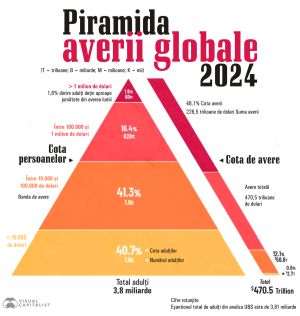Sending humans to Mars is a great promise of the 21st century - politically supported by Donald Trump and technologically by Elon Musk - but also one of the most difficult missions imaginable. The costs, risks and unknowns are huge, even if the motivations are rich in scientific, geopolitical and existential meanings.
• Why do we want to get to Mars?
Human curiosity, the desire to explore and the need for knowledge are at the heart of this space adventure. NASA emphasizes that exploring the cosmos is a "great vocation for humanity”. Researching Mars could answer fundamental questions: was there ever life there? What can Mars teach us about the history of the Sun and the solar system? For some political leaders, however, the stakes are also symbolic. Former President Donald Trump has vowed to make the conquest of Mars a national priority and has spoken of his desire to "plant the American flag” on the Red Planet, in a gesture of asserting supremacy in the space race with China.
• Elon Musk's Ambitions and the Technical Challenges
The man who wants to turn the dream into reality is Elon Musk, through his company SpaceX. The Starship rocket, the largest ever built, is intended to transport humans to Mars, with the first uncrewed mission planned for 2026 - a target that many experts consider unrealistic. Major obstacles include the lack of mature technologies for propulsion, radiation protection, long-term life support and communication delays (transmissions between Earth and Mars can take up to 20 minutes one way). NASA expert Kurt Polzin advocates the use of nuclear thermal propulsion (NTP), which could reduce the duration of the journey and the dependence on refueling, offering a considerable advantage in deep space exploration.
• Risks for body and mind
A journey to Mars will take between 7 and 9 months, in a confined space, without the protection of the Earth's magnetic field. Astronauts will be exposed to dangerous radiation, loss of muscle and bone mass, but also to psychological challenges: isolation, stress, lack of sleep.
"A day on Mars is 24 hours and 39 minutes. This difference, although small, can disrupt the astronauts' circadian rhythm," warns space architect Phnam Bagley.
Researchers are experimenting with different methods of radiation protection, including physical shielding and plasma fields, as well as drugs to limit cellular damage.
• Life on Mars: science dream or biological threat
Although probes have yet to find clear evidence of life, the red planet remains an intriguing candidate. Extremophile microorganisms on Earth-like the Chernobyl fungi or permafrost bacteria-prove that life can survive in extreme conditions, and Mars could host as-yet-undiscovered microbial life forms.
"If they can survive here, in such hostile environments, we have every reason to believe they can survive on Mars,” said astrobiologist Jennifer Eigenbrode. On the other hand, the presence of unknown microbes raises biosafety concerns-they could be either beneficial or dangerous to humans.
• Colonization-between idealism and reality
The first human mission to Mars could last around 500 days, but long-term plans will have to answer uncomfortable questions: Can a child grow up in a low-gravity environment? How will the lack of a sophisticated medical system affect pregnancy and childbirth? How can conflicts or accidents be prevented in conditions of total isolation?
"No matter what you plan, people will have sex. And if a pregnancy occurs, it immediately becomes a serious medical problem,” warns Dr. Erik Antonsen of NASA.
Exploring Mars remains one of the most provocative and fascinating ideas of our time - a supreme test of technology, science, political will and human limits. But from dream to reality, the road is long, expensive and full of unknowns. It remains to be seen whether this space promise will become a new "leap for mankind” or just an episode of ephemeral enthusiasm.



























































